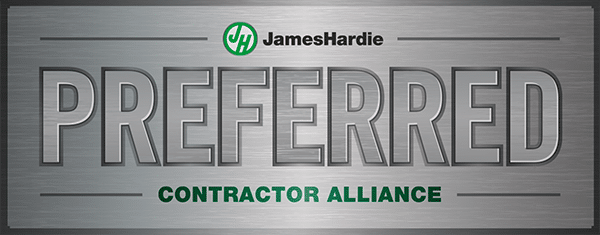[accordion clicktoclose=”true”]
[accordion-item title=”Why are moisture reports important?”]
Moisture reports can tell you if there is rot, mold, or other water damage hiding under your stucco, stone, brick or vinyl siding. If left unaddressed, moisture under your siding can turn into hazardous mold, become catastrophic, and drastically increase the cost of your future repairs.
[/accordion-item]
[accordion-item title=”How accurate is exterior moisture testing?”]
If done correctly by a true professional, exterior moisture testing can be very accurate. At Ai Restoration, we’ve removed the exterior cladding from over 2,000 homes over the last twenty years and continue to see the accuracy of moisture reports.
The accuracy of the report is not always conclusive on the extent of the damage, but if the report states deficiencies, we seem to always find deficiencies. A good rule of thumb is to note that while moisture readings are not an exact science and can vary, deficiencies and damages noted are most often accurate.
[/accordion-item]
[accordion-item title=”What should I do if my report shows elevated moisture readings?”]
Elevated moisture readings and system deficiencies require remediation procedures as soon as possible. The elevated moisture and absence of proper details will not improve over time, it will likely only get worse.
[/accordion-item]
[accordion-item title=”What should I do if my report shows low moisture readings?”]
Moisture readings are only one aspect of the stucco inspection. Low moisture readings are a good sign, but It’s important to look at the complete inspection to see if other potential issues are noted. You’ll also want to know how the windows/doors are flashed, underlying drainage system, proper flashings details, thickness of stucco, expansion & contraction joints, nailing patterns, etc.
[/accordion-item]
[accordion-item title=”What do the readings mean?”]
Here’s a basic outline of moisture level readings:
- 8-15% is considered common and “normal” in an exterior wall
- 16-19% is elevated and should be corrected before damage occurs
- 20 – 24% indicates excessive moisture and the possibility of damages (if not now, certainly over time)
- 25% + often indicates underlying damages, rot and decay.
[/accordion-item]
[accordion-item title=”If the report shows elevated readings does all the stucco have to be removed?”]
If your inspector found elevated moisture levels and/or other deficiencies, we recommend remediation (removal of the stucco). Corrections can range from single elevation removal and repairs, to complete removal of the system and structural repair to the walls behind. If you’re not in a position to properly remediate, there are contractors that will “cut out and patch” just the damaged areas—however, It’s important to realize this is not true remediation but rather a temporary fix, and damages are likely to return.
[/accordion-item]
[accordion-item title=”What if I only have elevated moisture readings in a few places?”]
If your moisture report shows elevated readings in only a few places, make sure to read the entire report and see if there are other problems noted. Homeowners tend to focus only the moisture readings, but it’s a good idea to look at the entire exterior cladding system. If there are other construction issues, moisture levels may increase and damages may occur.
[/accordion-item]
[accordion-item title=”What if I don’t believe the report?”]
If you don’t feel comfortable with the results, or your inspector didn’t take core samples to validate the findings, you may want to get a second opinion or hire a contractor to do discovery—a process where a section of wall is cut out or removed to see if there are underlying damages.
[/accordion-item]
[accordion-item title=”What is a core sample?”]
A standard core sample is when a small section (piece) of the exterior cladding is removed to more clearly see what is under the stucco and visually inspect for rot/damages. The section that is removed is generally then refitted back into place and sealed with caulk.
[/accordion-item]
[accordion-item title=”Why do I have to remediate the entire wall because one small spot has an elevated moisture reading or is showing soft substrate or no resistance?”]
There are a number of reasons for this, but here are the three most important:
- There is a good chance that there are damages outside of just the “spot” mentioned in the report.
- A proper system must entail a drainage plane to allow water and moisture to escape, and the only way to install this is on an elevation. If this is not done, the current problems will likely return.
- Warranty! You don’t want to have to do all this work again—there is only one right way to do this.
[/accordion-item]
[accordion-item title=”Why do I have to remediate the entire wall if it’s just the patio or deck that has issues? “]
As with the answer above, damage in one spot is a sign of underlying damage elsewhere. Partial repairs simply won’t cut it. As always, it’s best to discuss with a remediation professional as soon as possible—please reach out to discuss attached patio/deck moisture issues.
[/accordion-item]
[accordion-item title=”Will caulking fix the problem?”]
Caulking is a maintenance practice that needs to be monitored in all cladding applications and, in the right situation, can help with moisture problems. However, you cannot rely on caulking to permanently solve system deficiencies. It’s also worth noting that a proper caulk application, more commonly known as joint work, within exterior cladding systems will require specialized sealants and skilled installation to be effective.
[/accordion-item]
[accordion-item title=”Can counter flashing, weep screed, EZ Bead be retrofitted?”]
No, not properly. The counter flashing and EZ Bead are installed prior to the stucco being installed and attempting to install them after the stucco is applied can easily cause more harm than good.
The existing stucco would need to be removed (to make room for the counter flashing and EZ Bead) and then patched back in afterward. The results will look uneven and obvious. Trying to retrofit weep screed into the system will also not be worth it, as there needs to be a drain plane system in place to connect with the weep screed, without this drain plane system the weep screed is of no value.
[/accordion-item]
[accordion-item title=”Should I get my siding, stone, or brick tested?”]
Yes! The problems we are seeing go deeper than just the stucco into the underlying flashings, so there’s certainly a chance of the same defects being present under stone, brick and siding.
[/accordion-item]
[accordion-item title=”If my windows show rot can you replace those without doing remediation work to that wall?”]
Not properly and not with any type of warranty. The standard window installation required by all window manufactures is to install a “sill pan” under the window prior to installing any window. This sill pan is to catch any water that inadvertently gets in from or at the window and direct it into a water management system. Without the water management system installed, the water will seep directly into the wall.
[/accordion-item]
[accordion-item title=”What exactly is flashing?”]
Flashing is a pretty generic term in the exterior remediation industry, so is a little difficult to give a specific answer. We look at flashing as part of a complete water management system—properly installed individual flashings help complete this system and keep the water out.
[/accordion-item]
[accordion-item title=”How did the water get in?”]
There are a number of reasons water could be getting in, but we find lack of flashing and no underlying drainage to be two of the top causes of allowing water to get in.
[/accordion-item]
[accordion-item title=”How much damage do you expect to find given the results of the test findings? “]
This can greatly depend on the results of each test, age of the home, quality build of the home, maintenance, etc. Generally, we find the extent of the damages to coincide with the test results…the worst the test results the worst the damages.
[/accordion-item]
[accordion-item title=”My inspector indicated I need new windows—what’s the difference between new construction and replacement windows?”]
We do not recommend using replacement windows. A replacement window is typically installed into the existing frame of your current windows and sealed in place with caulk. Not only does this not allow for the required window flashings details that all top window manufacturers specify, it relies on caulk alone to seal and keep water out. The caulk will eventually fail and moisture problems will occur.[/accordion-item]
[accordion-item title=”There are some things I still do not understand after following up with my inspector. How can I get more information about the issues found in the report?”]
Please contact us and share your report; we would be happy to discuss and help to educate you more on moisture issues, exterior cladding systems, and the process of remediation.
[/accordion-item]
[/accordion]













